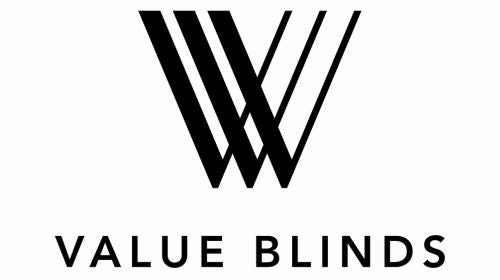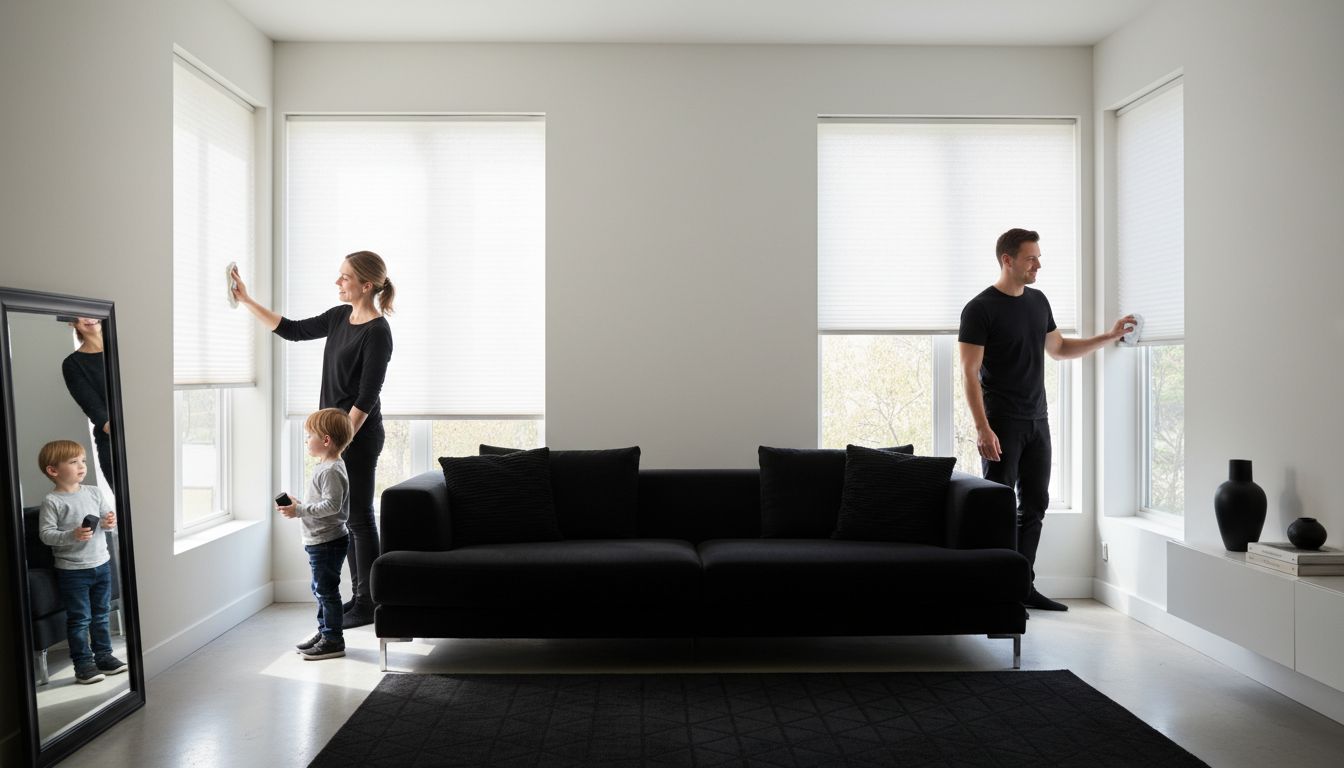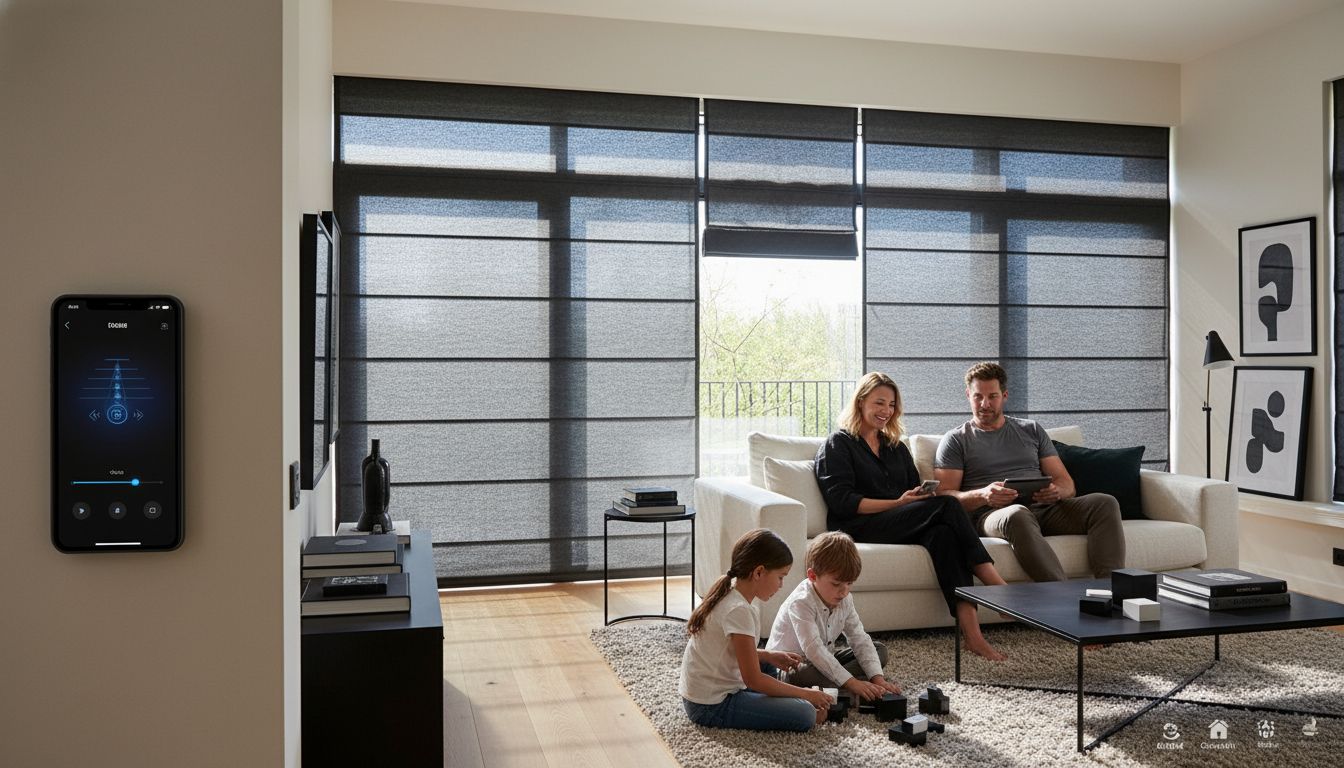
Smart Home Window Shading: Complete Guide
Did you know that smart window shading can lower annual energy bills by up to 25 percent? With rising concerns about comfort and efficiency at home, these intelligent systems are attracting attention for good reason. By combining advanced materials like electrochromic glass with automation, smart shades offer real-time control over natural light, temperature, and privacy, all while saving money and making everyday living more convenient.
Table of Contents
- Understanding Smart Home Window Shading Technology
- Types of Smart Shades and Blinds Explained
- Key Features and Benefits for Homes
- Installation, Integration, and Compatibility
- Cost Considerations and Maintenance Tips
- Comparing Smart Shades With Traditional Options
Key Takeaways
| Point | Details |
|---|---|
| Energy Efficiency | Smart window shading systems optimize energy use by dynamically adjusting light and heat based on environmental conditions. |
| Convenience and Control | Homeowners benefit from remote programming and automation features that simplify operation and enhance comfort. |
| Integration Potential | Modern smart shades can seamlessly integrate with existing smart home systems, enabling versatile control options. |
| Cost-Effectiveness | Affordable options like retrofit devices make smart window treatments accessible without the need for complete replacements. |
Understanding Smart Home Window Shading Technology
Smart home window shading technology represents a sophisticated intersection of energy efficiency, design innovation, and home automation. At its core, this technology transforms traditional window coverings into intelligent systems that dynamically respond to environmental conditions and user preferences. Electrochromism plays a pivotal role in these advanced window treatments, enabling materials to change color or opacity when exposed to electrical stimuli.
The fundamental mechanism behind smart window shading involves specialized materials that can modify their light transmission properties in real time. For instance, advanced research demonstrates thin-film coatings containing materials like GeTe (germanium telluride) that can modulate near-infrared absorption while maintaining consistent visible light transmission. This means windows can automatically adjust their transparency, heat absorption, and light filtering capabilities without compromising visual clarity.
Key technological features of smart home window shading include:
- Automated light and heat control
- Energy efficiency optimization
- Remote programming and smartphone integration
- Adaptive responses to sunlight and temperature
- Customizable opacity and transparency levels
By integrating cutting-edge materials science with home automation technologies, smart window shading systems offer homeowners unprecedented control over their indoor environment. Explore our guide on motorized blinds to discover how these innovative solutions can transform your living spaces.
Types of Smart Shades and Blinds Explained
Smart shades and blinds have revolutionized home window treatments with innovative technologies that offer unprecedented convenience and control. Android Police highlights the diverse range of options available, including motorized roller shades, cellular shades, and ingenious retrofitting devices that transform existing window coverings into smart systems.
The market offers multiple approaches to smart window treatments. Wired outlines key categories that cater to different homeowner needs and preferences. These include fully motorized solutions and smart conversion devices that can automate traditional blinds without complete replacement.
Types of Smart Shades and Blinds:
Here’s how the main types of smart shades and blinds compare:
| Type of Smart Shade | Key Features | Typical Benefits |
|---|---|---|
| Motorized Roller Shades | Sleek design Automated control |
Modern look Hands-free operation |
| Cellular Shades | Energy efficient Smart integration |
Insulation Reduced energy costs |
| Retrofit Smart Devices | Attachable units Automates existing blinds |
Budget-friendly No full replacement needed |
| Intelligent Tracking Shades | Sunlight & temperature sensors Adaptive automation |
Maximum comfort Responsive adjustments |
- Motorized Roller Shades: Sleek, modern design with complete automated control
- Cellular Shades: Energy-efficient options with integrated smart technology
- Retrofit Smart Devices: Attachable units that convert existing blinds into smart systems
- Intelligent Tracking Shades: Advanced models with sunlight and temperature sensors
With comprehensive window shade technology guides, homeowners can explore how these innovative window treatments can transform their living spaces, combining aesthetic appeal with cutting-edge functionality.
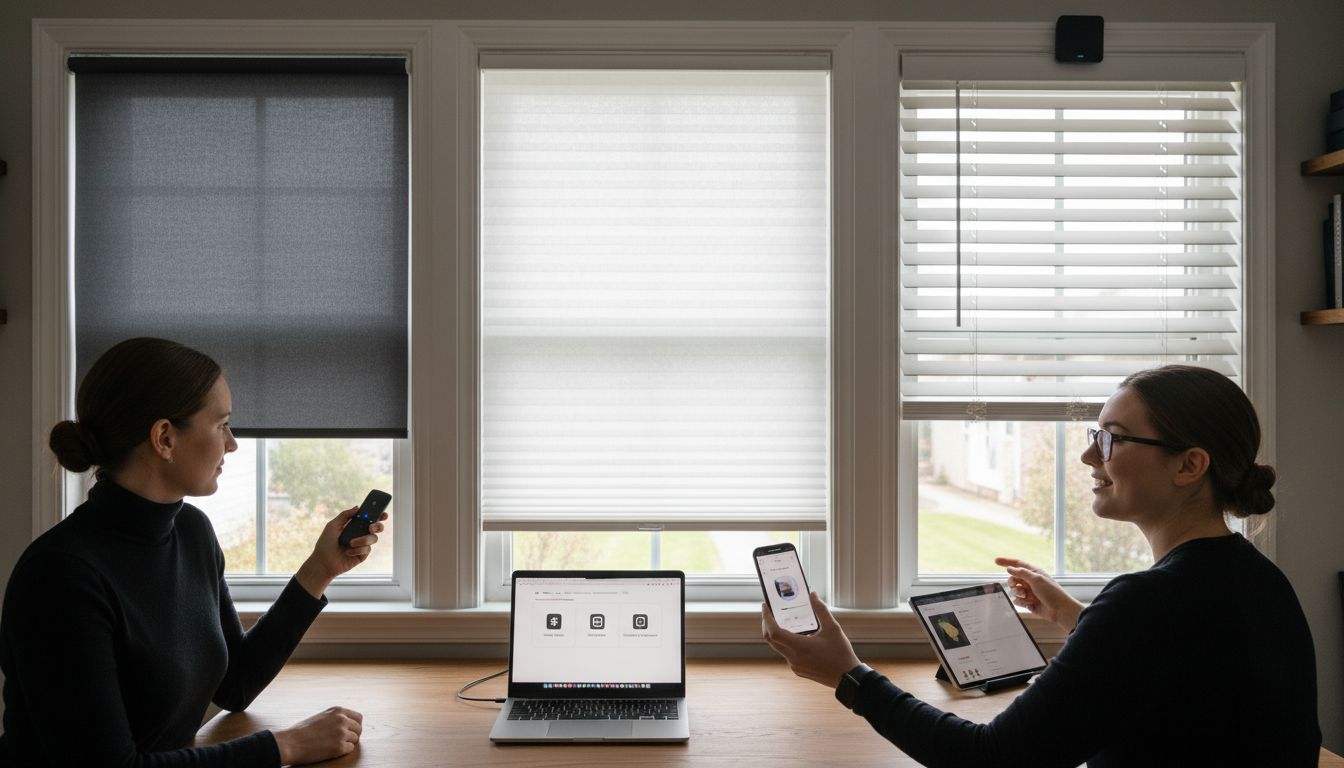
Key Features and Benefits for Homes
Smart home window shading systems represent a transformative approach to home comfort and efficiency. Silent Gliss highlights the multifaceted advantages of these innovative window treatments, which go far beyond traditional light control.
The core benefits of smart shading technologies encompass enhanced comfort, energy management, and home security. Accio emphasizes the remarkable energy savings potential through precise light and heat regulation. Automated shading systems can dynamically adjust based on sunlight intensity, room temperature, and user preferences, creating an intelligent living environment that responds intuitively to changing conditions.
Key Benefits of Smart Window Shading:
- Energy Efficiency: Reduce heating and cooling costs
- Comfort Optimization: Automatic light and temperature management
- Security Enhancement: Create home occupancy illusion when away
- Convenience: Remote control and scheduling capabilities
- Privacy Protection: Instant light and visibility control
Energy efficient window treatment tips can help homeowners maximize the potential of these innovative shading solutions, transforming how we interact with our living spaces through intelligent, responsive technology.
Installation, Integration, and Compatibility
Smart home window shading technologies have evolved to offer unprecedented flexibility in installation and integration. Silent Gliss highlights the remarkable capability of modern systems to seamlessly integrate with leading building management platforms, providing sophisticated two-way communication for complex home automation scenarios.
For homeowners and renters alike, smart window treatments now offer versatile installation options. Android Police notes that innovative solutions like the SwitchBot Blind Tilt can be installed without permanent modifications, making them ideal for those who want advanced technology without structural changes. These solutions integrate smoothly with major smart home ecosystems including Google Home and Amazon Alexa.
Key Compatibility Considerations:
- Smart Home Platform Integration: Works with Google Home, Alexa, Apple HomeKit
- Non-Invasive Installation: Retrofit options for existing window treatments
- Wireless Connectivity: Wi-Fi and Bluetooth-enabled systems
- Universal Remote Access: Smartphone and voice control capabilities
- Cross-Device Synchronization: Coordinate with other smart home devices
Understanding home automation blinds can help you navigate the complex world of smart window technologies, ensuring you select a system that perfectly matches your home’s unique requirements.
Cost Considerations and Maintenance Tips
Smart window shading technologies offer increasingly affordable solutions for homeowners seeking innovative home automation. Android Police highlights budget-friendly options like the SwitchBot Blind Tilt, which provides an accessible entry point into smart home window treatments at just $70, featuring an impressive 2,000mAh battery and an integrated solar panel to minimize ongoing maintenance.
Modern smart shade solutions balance cost-effectiveness with advanced functionality. Wired reports that motorized cellular shades are now available starting at $129, offering comprehensive features like remote control and solar charging options. These systems are designed for easy installation and compatibility with popular smart home platforms such as Amazon Alexa and Google Home.
Maintenance and Cost-Saving Strategies:
- Battery Management: Utilize solar-powered options
- Retrofit Solutions: Lower-cost alternatives to full window replacement
- Energy Efficiency: Reduce long-term heating and cooling expenses
- Warranty Considerations: Compare manufacturer support and coverage
- DIY Installation: Minimize professional setup costs
Energy efficient window treatment tips can help you maximize your investment and understand the long-term financial benefits of smart window shading technologies.
Comparing Smart Shades With Traditional Options
Smart window treatments represent a significant leap forward from traditional manual blinds, offering unprecedented levels of functionality and convenience. Silent Gliss highlights how modern shading systems transcend conventional window coverings by providing automated control, enhanced energy efficiency, and seamless integration with home automation platforms.
Android Police emphasizes that smart blinds deliver significant advantages over traditional options, including remote control capabilities, advanced scheduling features, and intelligent home system integration. Unlike manual blinds that require physical interaction, smart shades can adapt to changing environmental conditions automatically, optimizing comfort and energy consumption with minimal human intervention.
Key Comparison Points:
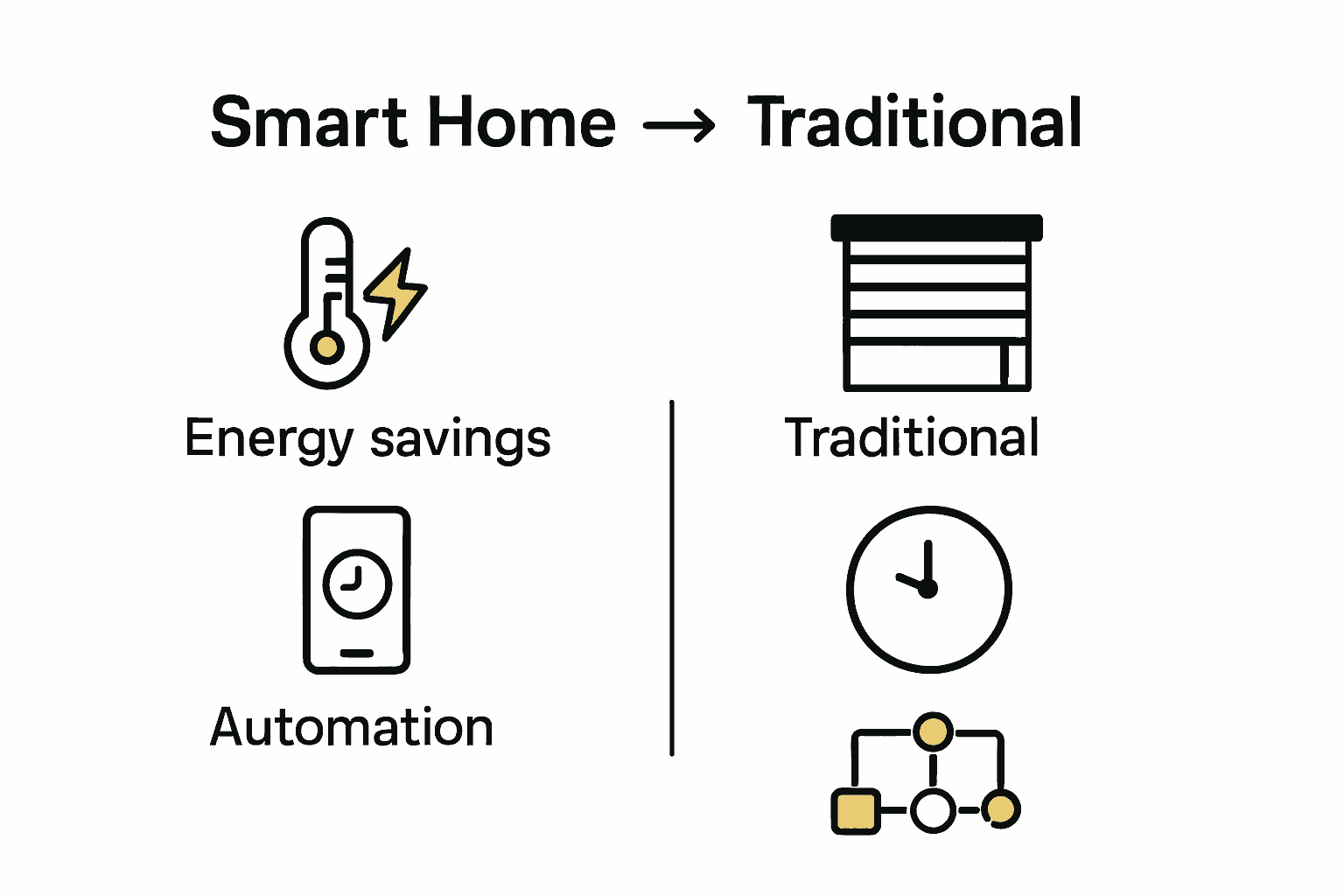
- Convenience: Automated vs. manual operation
- Energy Efficiency: Intelligent temperature and light management
- Connectivity: Smart home system integration
- Customization: Programmable settings and schedules
- Control: Remote and voice-activated options
Understanding the differences between blinds and shades can provide deeper insights into selecting the perfect window treatment for your specific needs and lifestyle.
Elevate Your Home Comfort with Smart Window Treatments
If you are inspired by the promise of smart home window shading and want to harness energy efficiency, convenience, and style all in one place then Value Blinds is your go-to destination. We understand that controlling light and temperature on demand while enhancing privacy and security is essential to a comfortable living space. Our selection of custom motorized and energy-efficient blinds and shades lets you bring advanced technology and premium design into your home effortlessly.
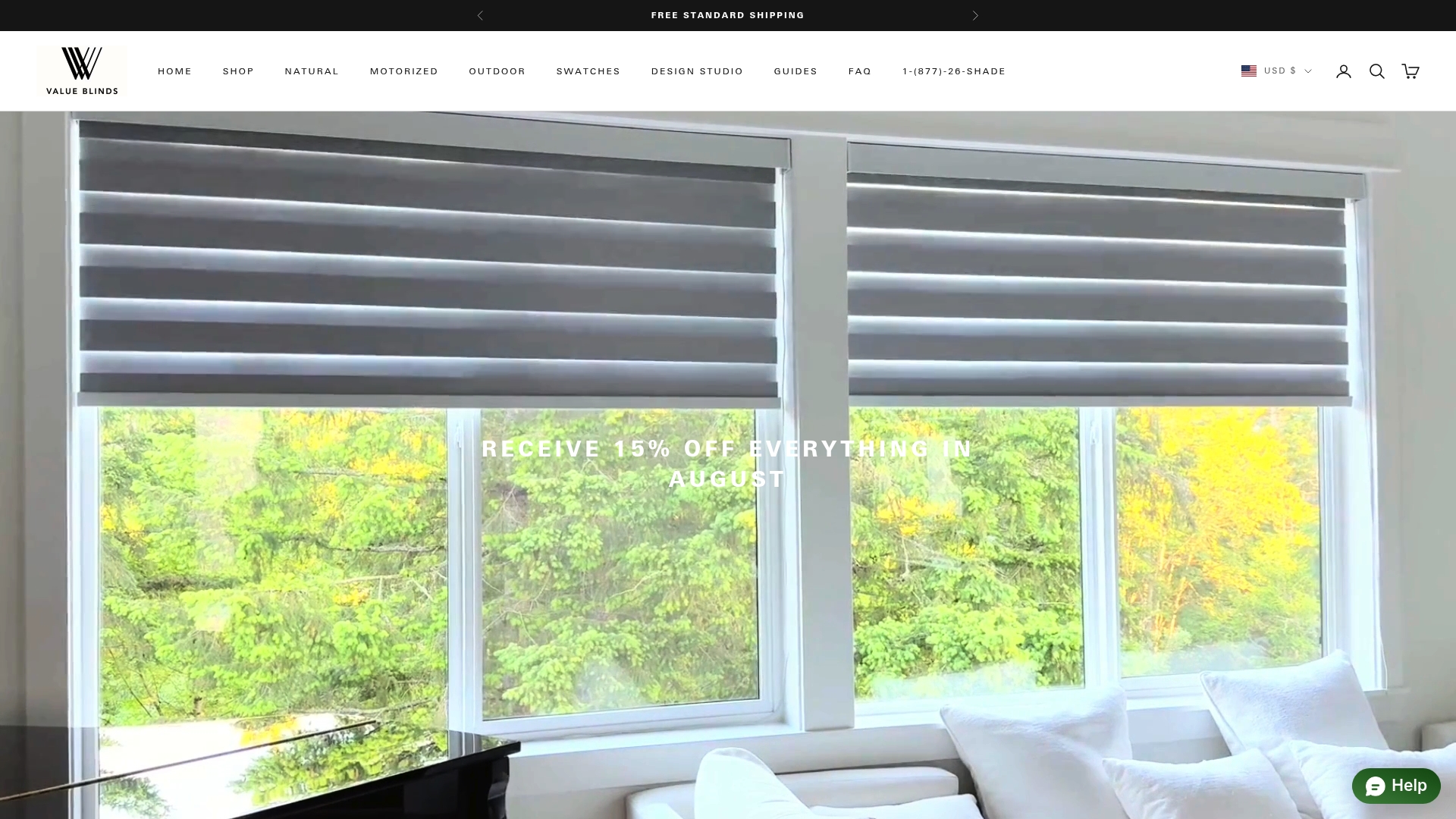
Explore our Trending Features to find smart shades with easy installation and remote controls that truly adapt to your lifestyle. Discover new possibilities in our New Arrivals featuring cutting-edge styles and functionality. Visit Value Blinds now and experience personalized solutions made to transform your living environment today. Don’t wait to upgrade to smarter window treatments that save energy and simplify your daily routine.
Frequently Asked Questions
What are smart home window shading technologies?
Smart home window shading technologies are advanced automated systems that allow window coverings to change opacity or transparency in response to environmental conditions and user preferences. They enhance energy efficiency, comfort, and convenience within the home.
How do smart shades and blinds compare to traditional options?
Smart shades and blinds offer automated control, energy efficiency, and seamless integration with smart home systems, unlike traditional manual blinds, which require physical adjustment. Smart systems can adapt automatically to light and temperature changes.
What are the key benefits of using smart window shading systems?
The main benefits include enhanced energy efficiency by reducing heating and cooling costs, increased comfort through automatic light and temperature control, improved security by simulating occupancy, and convenient remote access and scheduling capabilities.
How are smart window shades installed and integrated?
Smart window shading systems can be installed with versatile options, including retrofit devices that do not require permanent modifications. They typically integrate with major smart home platforms like Google Home and Amazon Alexa, allowing for remote control and synchronization with other smart devices.
